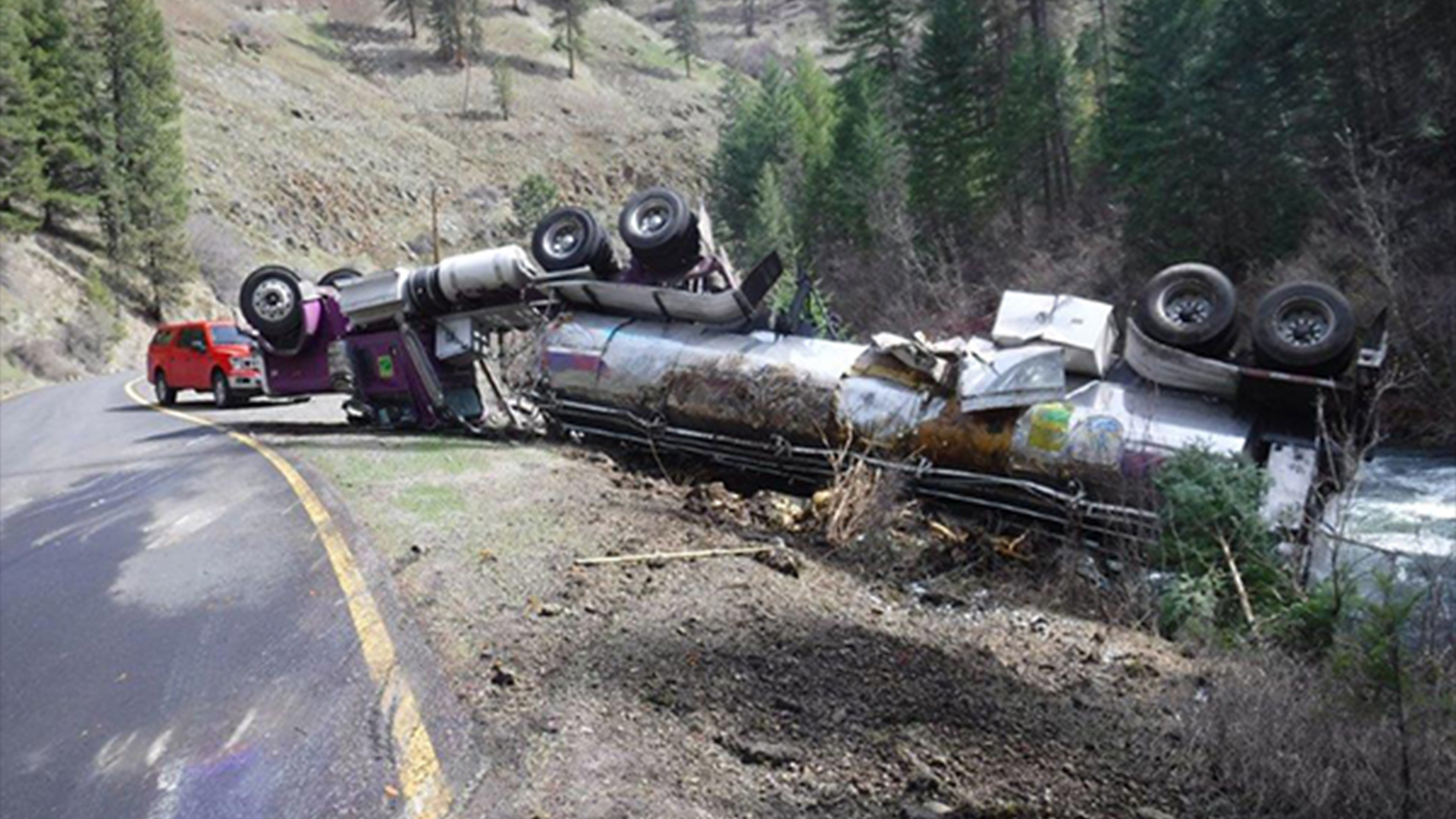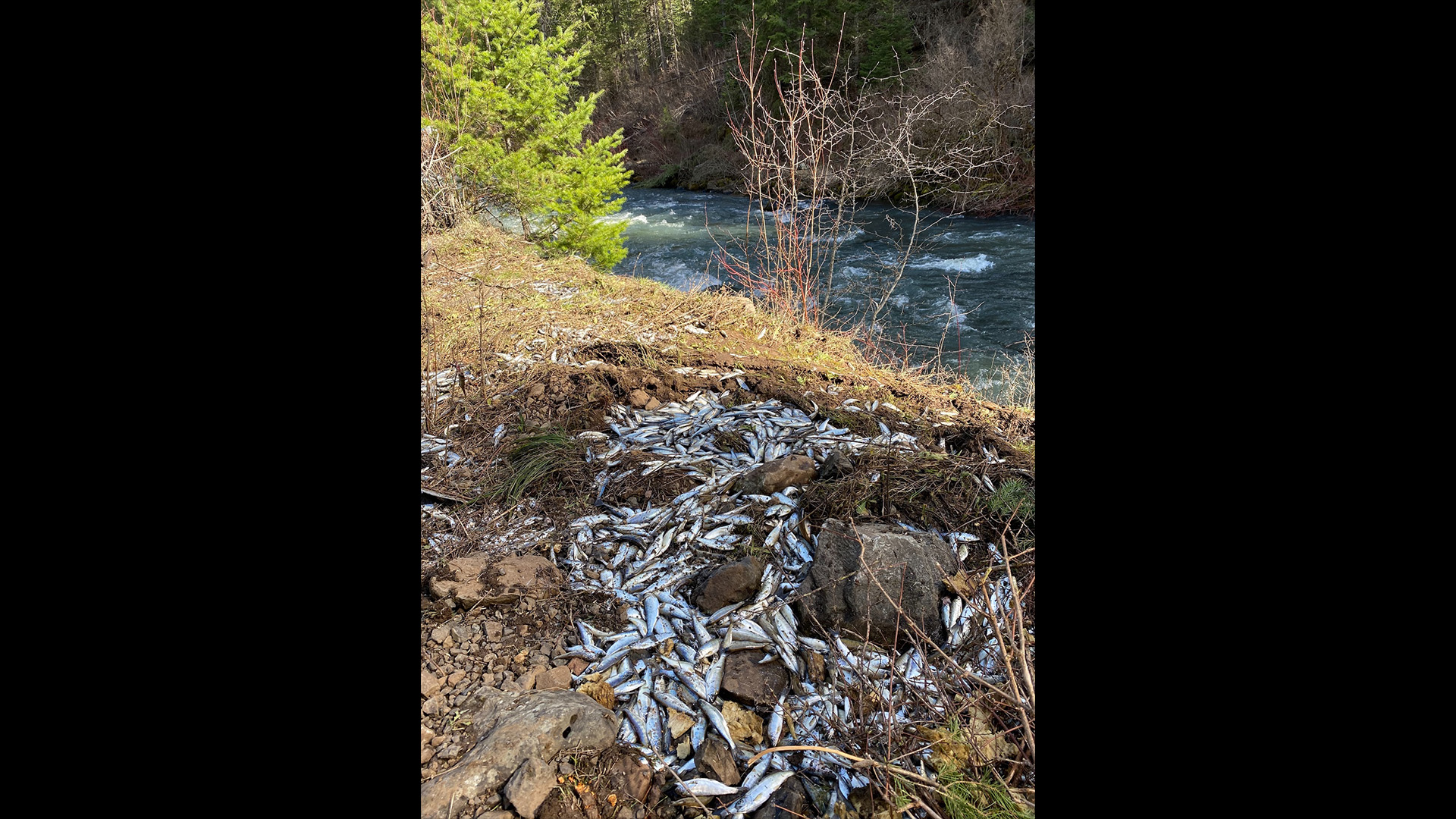
A truck carrying tens of thousands of baby salmon crashed on its way to a river in Oregon, but up to 77,000 salmon managed to survive by jumping into a nearby creek.
The accident happened after the 53-foot-long (16 meters) vehicle transporting the fish overturned on a sharp corner and went over a rocky embankment on March 29, according to the Oregon Department of Fish and Wildlife (ODFW). The tanker truck was en route to the Imnaha River to release its cargo of 102,000 spring Chinook salmon (Oncorhynchus tshawytscha), when it skidded off the road alongside a tributary of the Grande Ronde River known as Lookingglass Creek, in northeastern Oregon. The driver received only minor injuries, wildlife officials said in a statement.
Many of the young salmon, or smolts, survived the crash by jumping into the creek, the officials said. But wildlife officials and members of the Nez Percé Tribe, who co-manage the fishery, counted another 25,529 that weren't so lucky. Their carcasses were recovered both in the tanker and on the streambank.
The smolts that ended up in Lookingglass Creek will hopefully make their way to the Grande Ronde River, up the Snake and Columbia rivers and eventually to the Pacific Ocean, officials told The New York Times.
"The silver lining for me is 77,000 [salmon] did make it into the creek and did not perish," Andrew Gibbs, the ODFW fish hatchery coordinator for eastern Oregon, told The New York Times. "They hit the water running."
Related: 10 times humans messed with nature and it backfired

The original plan to release smolts into the Imnaha River is part of a strategy to supplement the local wild population, which is listed as threatened largely due to dams that were built along the lower Snake River in the 1960s and early 1970s. Decades of drought have lowered river levels across the American West and contributed to a steep decline in salmon populations.
Chinook salmon are anadromous, meaning they hatch in freshwater rivers and streams before migrating to the ocean to feed and grow. After up to six years spent in salt water, the salmon make their way back upstream to their original habitat, where they spawn to produce the next generation. After the adults spawn, they die. Smolts released into the Imnaha River typically spend a few days acclimating in a purpose-built pool before being freed to begin the 650-mile-long (1,050 kilometers) journey to the Pacific Ocean.
The smolts that died in the crash represent about 20% of the total number of fish the ODFW are planning to release into the Imnaha River this year, according to the statement.
"Fishery managers expect to see about 500 [to] 900 fewer adult fish returning in 2026 and 2027 due to the loss," officials wrote. Meanwhile, the smolts that were propelled into Lookingglass Creek will likely return there if they manage to reach the ocean, which could give rise to between 350 and 700 adults.







